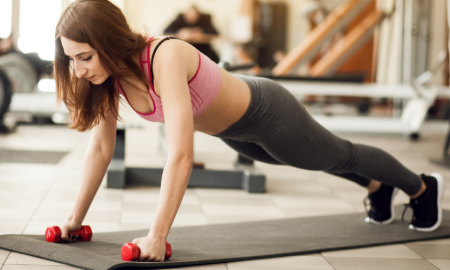
Is It Healthy to Run on an Empty Stomach?

Running on an empty stomach, often called fasted running, is a practice many runners adopt for various reasons. Some do it out of necessity, squeezing in a workout before the day begins, while others believe it offers specific health or performance benefits. But is it healthy to run on an empty stomach? Understanding the effects of running on an empty stomach is crucial for those who practice it regularly.
Is It Healthy to Run on an Empty Stomach?
Running on an empty stomach involves engaging in physical activity shortly after waking up, typically before eating breakfast. This often means the body has been without food for around ten hours since the last meal, leading to low blood sugar levels. With limited glucose available, the body turns to fat reserves for energy, which some believe helps with fat burning and weight management.

ijeab | Freepik | Running on an empty stomach involves engaging in physical activity shortly after waking up before eating breakfast.
Why Some Runners Choose Running on an Empty Stomach
For many, the decision to run on an empty stomach comes down to convenience. Early morning may be the only time available for a workout before the day’s responsibilities take over. Running without waiting for digestion after breakfast can be more practical, as it eliminates the need for an extra early start, especially on busy weekdays.
Others pursue fast running for its potential benefits. Running in a fast state forces the body to adapt to using fat as a primary energy source, which can enhance endurance, particularly in long-distance runners. This adaptation may help delay fatigue during extended activities, like marathons or trail running.
Fasted Running and Fat Burning
When the body’s glucose stores are depleted after a night’s sleep, it switches to burning fat for energy. This shift can lead to more efficient fat metabolism over time, appealing to those looking to lose weight. However, it’s important to remember that immediate weight loss after a run is mostly due to water loss from sweating. The real fat-burning benefits accumulate gradually with consistent exercise and a balanced diet.
The Challenge of Low Blood Sugar
Running on low blood sugar can be challenging, especially for those new to the practice. The body’s glycogen stores are limited, and once depleted, there’s a risk of feeling tired or light-headed during the run. This is why it’s crucial to listen to your body and not push too hard, especially during high-intensity workouts. Carrying a small snack, like a cereal bar, can be a helpful backup in case energy levels drop too low.
Effective Tips for Safe Fasted Running
If you choose to run on an empty stomach, there are several steps you can take to ensure it’s done safely:

prostooleh | Freepik | Starting your day with warm water is a good choice as it’s easier on the stomach and may hydrate more effectively.
- Hydrate First: Start your day with water or herbal tea to rehydrate after a night’s sleep. Warm water is a good choice as it’s easier on the stomach and may hydrate more effectively.
- Take Time to Wake Up: Allow yourself 10 to 15 minutes to fully wake up before hitting the pavement. This short period helps your body prepare for the physical exertion ahead.
- Warm Up Properly: Focus on dynamic stretches, particularly for the ankles and joints. A proper warm-up increases blood flow and reduces the risk of injury.
- Pace Yourself: Keep your run at a moderate pace where you can comfortably hold a conversation. This helps prevent overexertion, especially when your body runs low on readily available energy.
- Limit Fasted Runs: Fasted running shouldn’t be a daily practice. Aim to do it no more than once every two days to avoid excessive depletion of energy stores, which could lead to unwanted fatigue.
- Listen to Your Body: Be mindful of how your body feels during the run. If you experience dizziness, nausea, or extreme fatigue, cutting the run short or having a small snack may be wise.
Refueling After Your Run
Refueling is essential for recovery after completing a run on an empty stomach. An ideal breakfast is a balanced breakfast rich in protein and fruits. Foods like eggs and bananas provide the necessary nutrients to help your muscles recover and replenish lost energy.
More inHealthy Trends
-
`
Are Popular Diet Trends Actually Good for Your Heart?
Diet trends grab headlines every year, promising everything from glowing skin to dramatic weight loss. But when it comes to the...
July 30, 2025 -
`
Why Are Men Taller Than Women? New Genetic Study Finds Clue
For centuries, the average height difference between men and women has been noticeable—men generally stand about five inches taller. While environment...
July 23, 2025 -
`
How Upcycled Beauty Ingredients Are Reshaping the Industry’s Future
The beauty industry is going through a big shift — and it’s not just about trends. As waste problems grow and...
July 17, 2025 -
`
A Look Inside Faith Kipyegon’s Groundbreaking Mile Run in Paris
Last week in Paris, Faith Kipyegon returned to a place she knows well: Stade Sébastien Charléty. But this time, she wasn’t...
July 9, 2025 -
`
Dairy Is Making a Major Comeback — And Health Shoppers Are Loving It
Just a few years ago, dairy sat quietly in the back seat while plant-based alternatives took the spotlight. Now, it’s stepping...
July 4, 2025 -
`
Does Aging Cause Dental Problems?
Aging doesn’t automatically mean losing teeth or developing gum disease. In fact, older adults today are holding onto more of their...
June 25, 2025 -
`
How Upcycled Ingredients Are Shaping the Future of Cosmetics
What used to end up in bins or compost heaps is now finding a new life inside skincare bottles and beauty...
June 18, 2025 -
`
Rock Legend Rod Stewart Trains to Break Sprint Record at 80
Age isn’t slowing Rod Stewart down. Known worldwide for his legendary voice, stadium-filling tours, and timeless hits like “Maggie May”, the...
June 11, 2025 -
`
The Truth Behind Detox Diets – Health Boost or Risky Trend?
It’s hard to scroll through your feed without seeing someone sipping green juice with promises of instant energy, glowing skin, and...
June 3, 2025














You must be logged in to post a comment Login